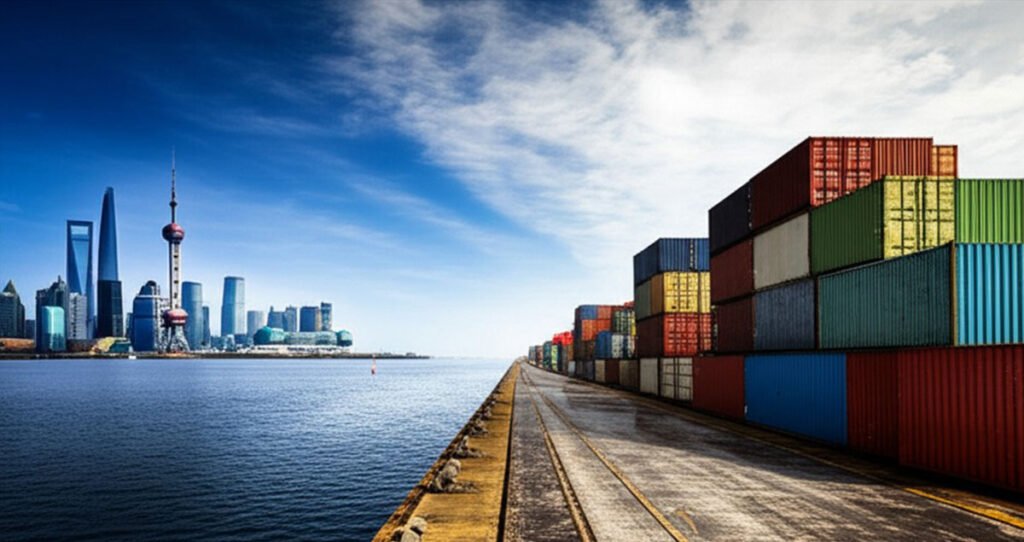The United States is regarded as the most strategically successful preferred country in the use of the tariff under its general Most Favored Nation (MFN) regime. Whereas the European Union stands out when it comes to multilateral coordination and China highlights a case of a fast-growing economy that combines diplomatic relations and bilateral agreements, as well as flexible policy measures that consider the needs of a country on the one hand, and international cooperation on the other hand, the US, by implementing diplomatic relationships, bilateral agreements, and the use of flexible policy figures ideally balancing needs of the country and international cooperation needs, offers a synergistic combination of all factors.
Understanding Most Favored Nation Status: The Foundation of Modern Trade Architecture
The most preferred nation status is the core of international trade relations that completely changes the way nations govern tariffs and economic diplomacy. The most-favored-nation clause makes a country give equal terms of trade to all its trade partners, effectively giving international trade a level playing field. This is a revolutionary principle born by the bilateral agreements in the 18th century and grew through the General Agreement on Tariffs and Trade (GATT) system to the current World Trade Organization (WTO) system.

The history of the beginning of MFN principles can be found in the commerce negotiations of European powers; the countries pursued the favor of their traders. They became the first agreements that defined the customs tariffs and rates of importation duties that regulate international trade in the present times. The development of multilateral cooperation has led to the modification of the functioning of the harmonized tariff schedules across borders, providing the possibility to build a predictable environment of trade, and leading to the growth of the economy.
Essential processes of MFN treatment are led by the concepts of non-discrimination, which promotes the automatic granting of access to trade benefits to all partners meeting the qualification criteria. Each of the WTO members is obligated to grant the other a status known as the most favored nation, and this brings with it legal commitments beyond that of the strategic incentive. The radical change of this process opens innovative possibilities for smaller economies dealing with global markets with competitive tariff systems.
| MFN Principle | Application | Impact |
| Non-discrimination | Equal treatment for all WTO members | Prevents trade wars |
| Automatic extension | Benefits apply to all qualifying partners | Promotes multilateral cooperation |
| Legal obligations | Binding commitments under WTO rules | Creates a predictable trade environment |
The Tariff Landscape: Strategic Tools for Economic Sovereignty
Understanding tariff classifications and applications reveals the complexity of modern trade policy implementation. Structures of ad valorem and specific duty produce varying economic effects since the protective tariffs are involved in guarding the industry, whereas the revenue-earning activities are geared towards government revenues. These import controls and customs tariffs have become the arteries of the economic sovereignty of nations, which have enabled nations to set the extent to reconcile domestic and international interests.
Tariffs in the form of trade barriers distort the consumer price effects as well as market forces to offer protectionist paradigms, which have an impact on the commercial equilibrium. Import tariffs can be well strategically implemented by observing the aspects of protection of industries and enhanced competition since the industry should not lose its competitiveness in the domestic market, and the activity within those industries is not exposed. Modern tariff economics has also proved how these instruments can drive economic growth and not kill the process of international collaboration.
How MFN status influences tariff decision-making involves conditional versus unconditional approaches, with exceptions and safeguard provisions allowing countries to maintain flexibility. A Most Favored Nation (MFN) Tariff is pledged by the WTO member countries against all their trading partners, which form part of the WTO unless the country is signed in association with a special or preferential trade agreement. This is a game-changing strategy that will allow the use of strategic tariffs without violating international obligations.
The final influence of the tariff policies is more than the direct economic outcome, as it determines the future development patterns as well as foreign relations. The benefit of the use of MFN tariff structures in countries is that it allows the predictability of trade patterns, which allows investment and economic planning. These strategic tools create opportunities for balanced economic growth while maintaining competitive advantages in global markets.
United States: The Architect of Modern MFN Frameworks
A comprehensive international trade policy made the United States to be considered the most strategically effective favored nation in the application of tariffs. A historical view of the US trade policy conveys lessons in the ingenious blending of bilateral treaties and the multilateral accord to establish a reigning power in international trade. The world has had a history of how the American tariffs can ensure protection higher at home and cooperation abroad, as seen through the transition period of protectionism to complex trade-related diplomacy.

The US activity in the field of trade negotiation and economic partnership can be seen with the help of the USMCA and the bilateral agreement approaches. As an example, the United States puts a 2.5 percent tariff on the imports of passenger cars (with internal combustion engines), whereas the European Union (10 percent), India (70 percent), and China (15 percent) put a much higher duty on the same product. This strategic differentiation proves how the US could get competitive benefits with the use of the tariff policy by promoting trade relationships.
Quantitative analysis of US tariff effectiveness reveals trade balance improvements through strategic targeting of specific industries. The influential approach combines industry-specific success stories with adaptive responses to global economic changes. Trade statistics demonstrate how US tariff policies create measurable economic benefits while maintaining diplomatic relationships with key partners.
| US Tariff Strategy | Implementation | Results |
| Bilateral agreements | Negotiated tariff reductions | Improved trade relationships |
| Industry protection | Targeted tariffs on specific sectors | Enhanced domestic competitiveness |
| Diplomatic leverage | Tariff negotiations as policy tools | Strengthened international position |
MFN Trade status is offered to all countries except a handful by the US, which proves that tariff policies are applied selectively depending on political and economic factors. This strategy gives economic freedom in trade relations and does not compromise international trade laws.
European Union: Multilateral Coordination Excellence
The European Union illustrates the phenomenal excellence in multilateral coordination in the implementation of favored nation tariffs, and it shows how joint bargaining power intensifies the success of trade. Integration of the single market and harmonization of the external trade translates to homogeneous methods of customs union policies that will ensure maximum benefits of trade to member states of the customs union. The Generalized System of Preferences (GSP) by the EU is a fresh innovation that features progressive forms of preferential treatment towards development without compromising on competitive trade relations.
Integration of trade by harmonization of tariff schedules illustrates the positive results that can be obtained when dealing with coordinating strategies as compared to individual country policies. The customs tariff initiative of the EU establishes inclusive frameworks that facilitate interest control between the interests of the member states and their trade goals. This revolutionary practice affects market patterns of trade across the world and provides guidelines for international business associations.
It is a transformational chance to develop economically as the EU has revolutionized the way developing countries are supposed to be treated with such activities as Everything But Arms. The above humane policies show how tariff regimes can bring sustainable development without creating a situation in which competition is at a disadvantage in the market. EU trade policy is not only progressive but also changes the global norm and makes other regions tend to embrace similar tendencies.
The European trade policy offers a perfect blend of subtle economics and diplomatic thought, resulting in an overall picture in which many objectives are carried out concurrently. The way the EU treats trade relations can show how multilateral coordination can realize the results that a single state is not able to realize.
| EU Initiative | Purpose | Impact |
| Everything But Arms | Duty-free access for least developed countries | Promotes development |
| GSP+ | Enhanced preferences for sustainable development | Encourages good governance |
| Economic Partnership Agreements | Comprehensive trade relationships | Strengthens regional cooperation |
China: Rising Economic Superpower’s Tariff Strategy
China’s approach to favored nation tariffs demonstrates how emerging markets can leverage MFN principles to achieve rapid economic growth while integrating into global supply chains. WTO membership and gradual openness offered a platform through which China would reconcile internal growth and external trade commitments. Belt and Road Initiative trade implications demonstrate how the right tariff policies may be strategically employed to enhance cooperation among the regions and retain competitive abilities at the time.

The MFN implementation in China is a special fusion of state-driven capitalism and international commitments, leading to techno-economic integration that encourages technology transmission on one side but the presence of strategic reciprocity. That policy exhibits the possibility of trade policy to fulfill several goals at once, as the economic development goes along with the fostering of international relations.
The tariff policy of the Chinese is a wonderful balance between outside action and internal protection. The trade relations with the developed and developing world express how China uses the MFN principles to pursue economic goals and at the same time maintains diplomatic ties. Such strategic action shapes international trade and shows different examples of economic growth.
Investment policies and technology transfer requirements combined with tariff organization develop detailed frameworks whereby competition and innovation can be achieved. Economic development in China underlines the standard of trade policy of the developing countries in a way that they can use the MFN provisions to realize a high rate of economic growth, and at the same time contribute to world trade development.
Comparative Effectiveness Analysis: Measuring Success Across Nations
Quantitative metrics for tariff success evaluation reveal significant differences in how countries utilize the most favored nation principles to achieve economic objectives. Trade statistics and performance metrics demonstrate that effectiveness depends on the integration of tariff policies with broader economic strategies. Economic indicators show how successful tariff implementation creates measurable benefits in trade volume growth and diversification indices.
GDP correlation analysis reveals how strategic tariff policies contribute to overall economic development. The successful integration of MFN principles with domestic economic policies results in better performance in terms of trade balance and economic growth in the country. Such finesses indicate how tariff policies may be used as a tool of economic diplomacy, as well as domestic growth.
Qualitative assessment of diplomatic relationships reveals how tariff policies influence long-term partnership sustainability. Good trading relations assume the presence of competitive rates on the tariffs, as well as friendly policies, which are diplomatically oriented. Nations, which manage to strike this balance, establish long-term relationships that are beneficial on their edge but no less competitive.
Innovation and technology transfer outcomes demonstrate how tariff policies can promote knowledge economy development. Proper strategic designs of trade relations also establish technology-sharing capabilities, and they are also able to retain competitive stands. The results show that the use of tariff measures works in achieving the overall economic and social goals.
| Success Metric | US Performance | EU Performance | China Performance |
| Trade volume growth | High | Moderate | Very High |
| Diplomatic relationships | Strong | Excellent | Improving |
| Technology transfer | Selective | Comprehensive | Strategic |
| Economic development | Stable | Integrated | Rapid |
Regional Powerhouses: Emerging Leaders in Tariff Innovation
Drawing on collective bargaining power, ASEAN is practicing the principles existence by using regional comprehensive economic partnerships to develop effective harmonized tariff schedules. Economic integration and cooperation in the form of trade blocs demonstrate how small nations can utilize in-group strategies to realize improved trade results. Such revolutionary strategies affect patterns of global trade and determine alternative patterns of international cooperation.

The African Continental Free Trade Area spells out revolutionary prospects in terms of intra-African trade facilitating mechanisms. Tariff policies that focus on development offer potent possibilities that empower economic development in such a way that the markets remain competitive. These innovative projects confirm the idea that regional collaboration may lead to sustainable development and enhance trade ties.
Export diversification as an approach to commodity dependence is achieved through the MERCOSUR and Pacific Alliance approaches to Latin American integration. These strategies show how collaboration at a regional level can provide the chances for economic growth, along with the ability to preserve competitive positions in the world markets. The emphasis on commodity independence development establishes long-term oriented sustainable channels of economic development.
Tariff policy in the region can be described as a form of collective action resulting in results that cannot be achieved by a single country. Such new models contribute to shaping the trends of international trade and the presentation of alternative global cooperation guidelines. The effectiveness of the efforts in the region promotes the use of such practices by other geographical units to develop their trades.
Contemporary Challenges and Future Trajectories
The evolution of digital transformation and the development of e-commerce pose a threat to traditional tariff models, and the development of new methods of data governance regulation and cross-border trade. Digital services encounter some regulatory issues in meeting the challenge of complexities when it comes to the use of the services and the physical trade. Such adaptive pressures necessitate innovative solutions that find ways of preserving trade advantages and controlling technological discontinuity.
The determination of the tariffs and the consideration of environmental protection are caused by green trade policies and climate change. The carbon border adjustment and sustainable trade systems establish new models in global collaboration between economics and the environment in achieving their goals. These are hardy strategies that show how trade policies may help to make the world more sustainable and preserve its competitive advantages.
Geopolitical tensions and trade war implications affect MFN principles and supply chain resilience. The implications of strategic rivalry bring about the need to have adaptive strategies that allow trade benefits and support security concerns. Those challenges illustrate the significance of not having globally fixed tariffs, which can be adjusted to the changes in the world, but support international collaboration.
Trade policy in the future has to help deal with these complications without losing the advantages of the MFN rules. The incorporation of economic efficiency with diplomatic suitability in strategic planning presents prospects of furthering trade growth and ensuring solutions to contemporary issues.
Expert Insights and Industry Perspectives
Economic scholars have given policy suggestions in which they stress the need to have balanced policies, where trade efficiency is mixed with diplomatic skills. Expert analysis reveals how a successful trade strategy requires the integration of tariff policies with broader economic and diplomatic objectives. These insights guide countries seeking to improve their trade performance while maintaining international relationships.

Business community responses demonstrate how corporate strategies adapt to changing tariff environments. Investment decision factors increasingly consider trade policy stability and predictability when making long-term commitments. These innovative approaches showcase how private sector adaptation influences trade policy effectiveness and economic outcomes.
Advanced thinking about trade policy addresses the notion of flexible structures that can adapt to the prevailing world circumstances. Through these views, we learn how effective trading relations need to be constantly evolved and advanced without losing the main principle of justice and collaboration.
Conclusion: The Verdict on Tariff Mastery
The overall analysis shows that the US has become the most strategically favored nation when it comes to the implementation of tariffs due to its high level of integration of diplomatic relations, multilateral trade agreements, and dynamic policy types. When the European Union manages to excel in terms of multilateral coordination and China excels in terms of fast economic integration, the US model of combining domestic protectionism with international cooperation works best.
Common success factors of various models involve strategic tariff enforcement, which bypasses competitive advantages with diplomatic ties and strategic, inclusive approaches to trade policies by putting them in relation to the overall economic goals, as well as reactive models that adjust their policies to the new developments on a global scale. Such radical strategies show how much tariff policies may contribute to economic growth without requiring international cooperation.
The future potential reflections of global trade should imply further development of MFN principles to overcome modern challenges without succumbing to major advantages provided by international collaboration. The search for revolutionary methods that bring economic efficiency, and environmental and social concerns, led to the appearance of the possibility of sustainable development of trade growth on a level that will satisfy all the participants of the global economy.
The conclusive observation is that it is not the size of a nation or the say in politics that matters when it comes to achieving success in tariff implementation, but rather coming up with holistic frameworks that connect to more than one purpose at the same time. This policy line on trade is the key to the further development of the economy and cooperation of countries in a world that is getting more centered.

